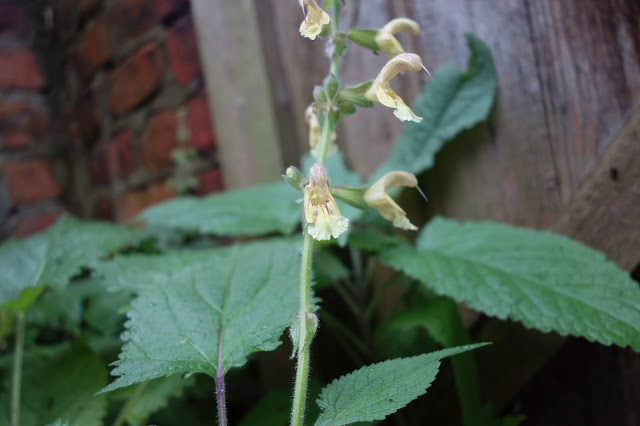Borage flowers photographed on 19/10/2019.
It looks like I have been using my Fuji FinePix F770EXR camera for over 6 years, I just discovered. I don't think that can be correct. I think I did not set the calendar on the camera for the first year that I had it, so the year 2013 was the default date. I think I bought it in early 2016.
Anyway, I decided to upgrade to something that can see a bit more detail. After trawling through reviews I found one that got a good press and was only slightly more than I was really willing to pay.
All these photos are from my new Sony Cybershot RX100. They have made some excellent Spider-man films, so I was sure their cameras would also be good. The fact that it has a Carl Zeiss lens was quite persuasive, too. I got the camera from Argos along with the necessary memory card and a carrying case. So far I have only used the automatic setting, except for trying the "Macro", which did not work as well. It seems far more forgiving of being hand-held. I did not need to brace myself against something solid to get clear pictures quickly.
Borage flowers photographed on 20/10/2019.
After the flowers had dried a little.
The Salvia "Hot Lips" flowers are still abundant and show a range from pure white (which didn't photograph very well) to pure red. Where the photos show red it is correct, the pinks are those where the intensity of the colour bamboozled the camera.
The kusagi tree (Clerodendrum trichotomum) has a few flowers left...
...even as the first fruits ripen. My previous photos and a description of the tree can be found here.
The milkweed (Asclepias syriaca) has not had a good year, only producing a few bunches of flowers. There was only one fruit, still very immature. Pictures of the flowers from last year with many bees on them can be seen in my post on my garden.
The Plectranthus ernstii is still happily covered in spikes of flowers. It is normally on the windowsill inside but I took it outside to take its photo.
The Plectranthus zuluensis only has two spikes of flowers now. Previous photos and my description of the two Plectranthus plants can be seen here.
Only a few stragglers on the Salvia nubicola.
I pull most of the hedge woundwort (Stachys sylvatica) seedlings and runners out because they are so invasive and the leaves smell rather nasty. However, they are native and do feed the bees for a few months so I leave some. There are still a few flowers.
The Welsh poppies are about to get to their second flush of flowers after a lovely show in Spring. This plant used to be classified as Meconopsis cambrica. Recently, it was found to be nested among the genus Papaver so they changed the name to Parameconopsis cambrica. The name Meconopsis should have stayed with the Welsh Poppy as it was the first to be given that name. Common sense and compassion for amateur gardeners led the taxonomists to leave the many dozens of spectacular Himalayan species as Meconopsis. Then they changed the Welsh poppy to Papaver cambricum, so it is now one of the well-known poppy genus like the corn poppy and opium poppy. The taxonomists have actually resurrected the original botanical name given to the plant by Linnaeus in 1753.
Parkinson had described the Welsh poppy in his Theatricum Botanicum in 1640. He knew of no medicinal uses for the plant. In English he called it "Yellow wild Bastard Poppy of Wales".
Welsh Poppy (Papaver cambricum) flower bud.
Indoors the Narcissus tazetta subsp. chinensis (水仙, shuǐ xiān) are sprouting nicely, these photos were taken one week after planting. I will probably do a short piece on these interesting daffodils when they flower. If you want to read about them now, this article is quite good.
I could not persuade the camera to get the entire lesser periwinkle (Vinca minor) flower in focus at once. They mostly flower from the start of February until the end of April but they often have one or two flowers at other times of year. They always remind me of blue summer skies.

























